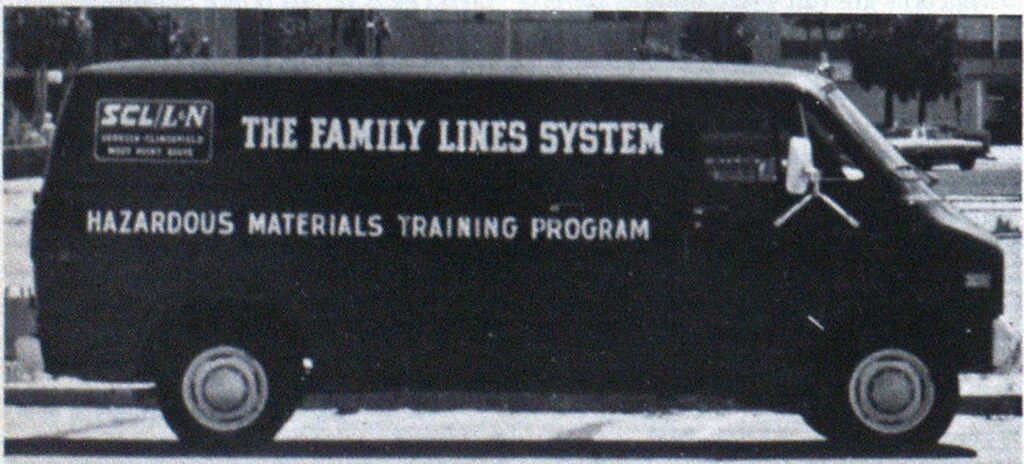
Railroad Offers Disaster Planning
“Although we have spent millions of dollars on roadway maintenance and other derailment prevention schemes, we know that derailments cannot be prevented entirely and inevitably some may involve hazardous materials. Our (railroad) philosophy is that in the event of a derailment involving hazardous materials, the goals are preservation of life and property, in that order….!”
With this statement by Prime F. Osborn, president and chief executive officer of the Family Lines System, the training of emergency response personnel begins to reduce the impact of these incidents involving hazardous materials.
The training program, entitled “Handling Hazardous Materials Emergencies,” was designed by the author in conjunction with Seaboard Coast Line Railroad officials J. L. Frost and P. A. Gill. It is a dynamic, fast-paced multimedia presentation designed to assist emergency response personnel handle hazardous materials incidents, especially those involving rail transportation.
The purpose of the five-hour training program is to reduce the impact of incidents involving hazardous materials by providing emergency response personnel (fire, law enforcement, civil defense, rescue, and local and state government) with the appropriate knowledge and skills with which to handle these emergencies.
The Family Lines System (Seaboard Coast Line, Louisville and Nashville, Georgia, Ciinchfield, and West Point railroads) will present the hazardous materials training program at no cost to emergency response personnel in 13 southeastern states through which the Family Lines System operates.
The program will provide the students with the knowledge and skills to perform at the following levels:
National Availability Of Program Planned
The Interagency Task Force on the Rail Transportation of Hazardous Materials, made up of officials of the railroads and the chemical industry, has commissioned Assistant Professor Charles J. Wright of Western Kentucky University to refine the first half of the Family Lines System program for presentation nationwide at no cost to emergency response personnel.
The 2 1/2-hour, self-standing training program, presented in a single screen format, will consist of a slide-tape presentation incorporating the NFPA film, “BLEVE.” A student information packet and practical activities are incorporated into the program. The program will be presented locally by railroad and chemical industry personnel upon request.
Information about the program and how to obtain the training will be announced shortly.
- Search out and identify the potentials of hazardous materials in their own community.
- Describe generally the exposure (people, property, systems) and risk potential involved in hazardous materials emergencies.
- Explain the purpose of emergency response personnel’s involvement in emergencies.
- Recognize the presence of a hazardous materials under various circumstances.
- Identify the generic name of the commodity involved.
- Determine the chemical and physical characteristics and the inherent hazards of that commodity.
- Predict the potential harm to people, systems and property in the danger zone.
- React favorably to the potential of the situation during the initial moments after arrival.

In short, emergency response personnel must become part of the solution—not part of the problem.
The multimedia program uses a three-screen slide format with intermittent use of 16mm movies. All visuals are synchronized with a tape recording of the verbal portion of the presentation and are controlled automatically from a multiphase synchronizer. Practical exercises are interspersed throughout the presentation. Workbooks and other resource materials are provided each student for further reinforcement and later review.
Program delivery
The Family Lines System has provided two hazardous materials specialists to deliver the program. The two specialists provide close liaison between the railroad, emergency response personnel, and local, state and federal authorities. Both individuals have a complete teaching kit, including hardware and software, and a van with which to transport the program components.
An adaptation of the program will be shown to all operating personnel on the Family Lines System. This crosstraining will benefit emergency response personnel because of a common understanding of each other’s responsibilities and objectives.
In addition to the training program, the Family Lines System has instituted the Association of American Railroad’s hazard identification system. This system is a computer program on hazards, characteristics and reactions to some 1600 hazardous materials found in transportation. This information should be readily available from the train crew or through the railroad’s divisional offices and transportation centers.
For further information on these activities, interested parties should contact P. A. Gill, Manager, Hazardous Materials Control, Seaboard Coast Line Industries, 500 Water Street, Jacksonville, Fla. 32202. His telephone number is 904-353-2011, X-216.
Hopefully, other hazardous materials shippers and carriers will undertake similar programs to benefit local emergency response personnel nationwide.

